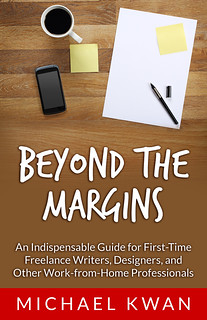
Even people who think that they have perfect grammar mess this one up from time to time. Even though they may have similar meanings, there is a very distinct difference between lie and lay.
Starting with Present Tense
Let’s first differentiate between the meaning and usage of these two words.
Lie refers to the act of reclining (ignoring the other meaning of saying something that isn’t true). In other words, the subject is taking an action without the necessary involvement of an exterior object.
Dracula is going to lie down now, because he’s tired.
You should lie on your stomach and be quiet if you don’t want to get caught by the Boogeyman.
This is what is called a complete verb, because it doesn’t require an object. The shortest sentence could be two words: I lie.
Lay refers to the act of placing something, and that is the critical difference. The action is not being taken by the subject on him or herself. The action is being taken by the subject on some other object.
Jack lay the amulet on the monster’s chest.
Should I lay the carpet right here or over there?
The verb “to lay” will always require a direct object. It has to be done to something.
And Now It Gets Complicated
Assuming that you now understand the fundamental difference in meaning between lie and lay, things get far more complicated when we start introducing the different conjugations and tenses for these words.
The present tense of “lie” is “lie.” I lie down right now, you lie down, and he lies down. However, the past tense is “lay.” I lay down yesterday, you lay down, and he lay down. And the past participle is “lain.” I had lain in bed for hours by the time the werewolf appeared that night. You had lain and he had lain.
The present tense of “lay” is “lay.” I lay down the book. The past tense and past participle are both “laid.” You laid the book down on the desk before leaving. He had laid the book on the desk.
It’s likely because of this crossover of terms that people get confused. The past tense of “lie” is “lay,” but the present tense of “lay” is also “lay.” And we don’t really hear or read the term “lain” all that often in casual speech, but we hear “laid” more often. When you combine the complications of definition with the complications of proper verb tense, you’re left with a very complex grammar situation.
Lying in Wait, Laying It on Thick
This can be hard to remember, so the only way you’ll get it is with practice. Write lots and read more. After a while, you’re more likely to get it right, because it’ll sound or feel right. Then, you can lie down and relax after you’ve laid out all your words on the page.





No way, this is a total lie! Or maybe I’m the liar? I hear that laymen lie about lying on the job! So it appears there is even more confusion underlying the lay of this complicated lie.
..Ok, back to work!
Would a lying lying liar be a resting person who tells the truth?
No, I’d say it’s a person who tells an untruth while resting. We have to assume that a liar is lying, so if the lying liar is lying down, he is then a lying lying liar, no?
For the sake of entertainment, would a lying liar not fall into the catagory of a double negative. Hence he is laying down while lying about his lies.
Ok, that’s enough about this one… 🙂
I don’t believe so, in much the same way that a running runner doesn’t cease running or a talking talker doesn’t stop talking.
What is the difference in these two Michael?
“I had lain in bed for hours by the time the werewolf appeared that night.”
“I had been laying in bed for hours by the time the werewolf appeared that night.”
Nice blog!
Okay, here’s one that has always bugged me a little:
The phrase “I couldn’t care less,” which is used to express indifference.
More often than not, I hear people say “I could care less” instead, which would mean that you DO care at least a little. Even teachers, “journalists”, and other people that should know better get this wrong frequently.
I actually wrote a Grammar 101 post on could/couldn’t care less too!
https://btr.michaelkwan.com/2008/11/17/grammar-101-i-could-care-less/